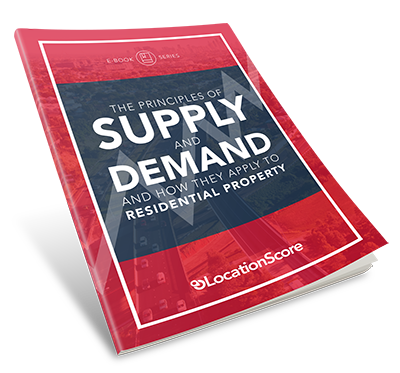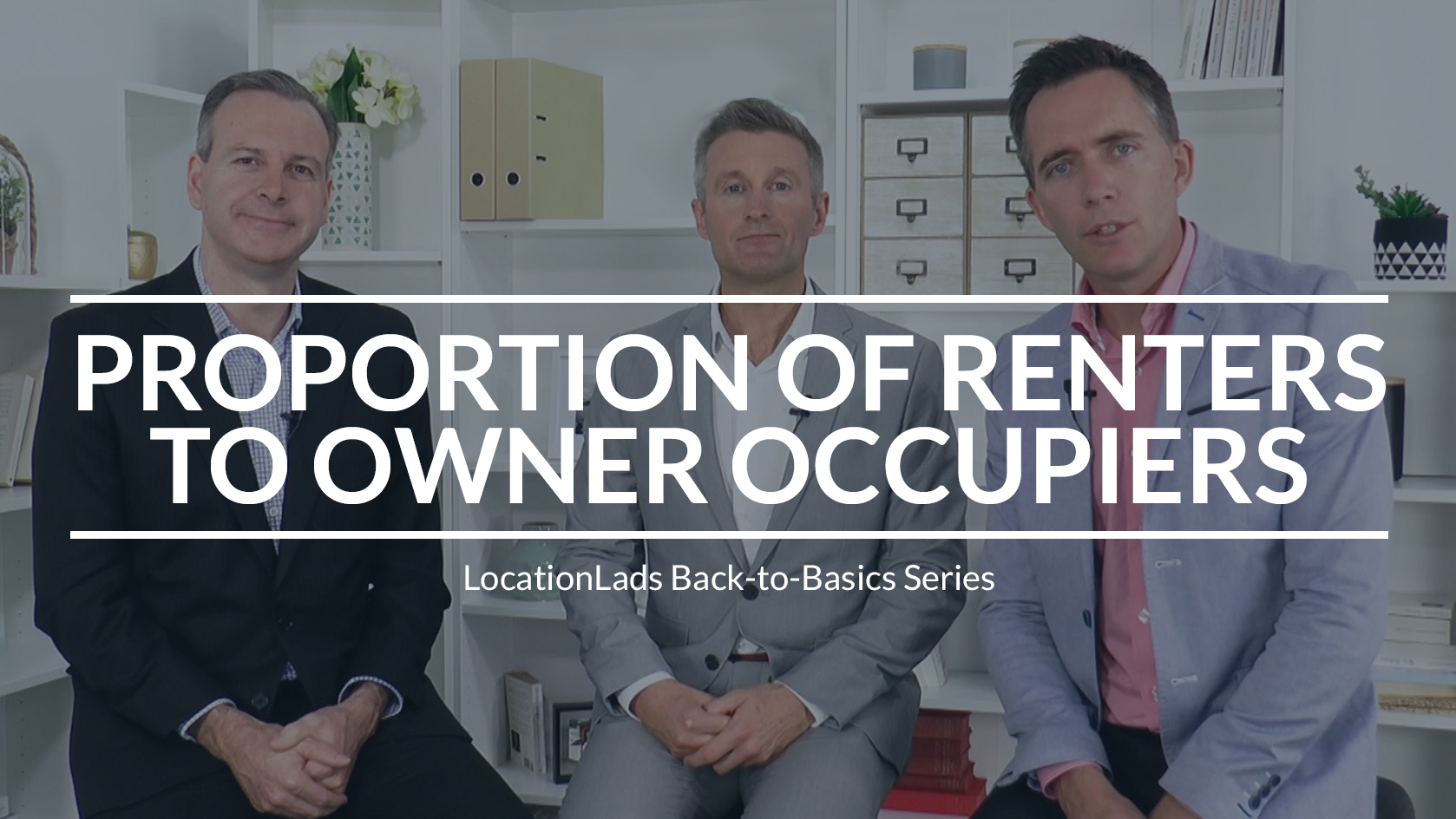×

The Principles of Supply and Demand and How They Apply to Residential Property
We Only Send You Awesome Stuff

LocationScore
|
June 4, 2017
Bryce: Alright you’re back with the Location Score Lads and we are talking percentage of renters compared to owner occupiers, or quite simply, how many renters in the suburb. And it's an interesting stat isn't it Jeremy because the owner occupiers are generally 70% of the market and 30% are renters. But this measure gives you an indication of the desire and the status that comes from a suburb because if it's too high one way and to low another, it means totally different things, doesn't it?
Jeremy: Yeah well to me it's an indicator of supply as a property investor, I don't want to be competing with a whole lot of other property investors. So I want a lower proportion of renters because that means there is a lower proportion of investors and owner occupiers take better care of their property, they don't mind capitalising on their property whereas an investor, it's all about return on investments. So you'll find that a heavy concentration of owner occupiers in a location will mean that the properties preserve their value a little bit better and you've got less competition from other landlords.
Ben: And I think that the perfect example of this is mining towns. But when you see a boom bust of the mining area, you actually see in those markets, it's almost 70% investor and only 30% owner occupier. So once the mining boom slows down and the jobs aren't there we basically have left to see who's there. Who's exposed to that. So there's that glut of investors trying to find that random tenant so that values collapse, rents collapse in those areas. Now that's the extreme case, whereas that's completely flipped on its head. But I'm with Jeremy in a sense that I don't want to be investing in an area where there's hundreds of other investors coming into that area seduced by just a yield number. Because ultimately they don't have care for the property. I mean they're renting it in most of those socio-economic areas. I really do, I call it the lifestyle test and on the podcast and on a few other things. But that's really important to understand isn't it.
Jeremy: And it's not just about those regional towns, that's a good example. But also, in our cities where you have a massive unit over supply, you'll find that you can get a very high percentage of renters in the unit market, but in the house market it might be owner occupiers. So, yes, it's not just a client confined to regional areas. Cities can suffer too.
Ben: Totally...
Bryce: I guess it needs to be taken into consideration the vacancy rate also isn't it because if you've got a higher percentage of renters but the vacancy rate is very, very low, it's still a good indicator of demand. So you've got to overlay that with the type of product if it's a house versus a unit. Because if you think, on the flip sid iif it's too low as an investor, you're worrying if there's enough renters in that market but that's not always the case. Because if it is really low and the suburb has the right status, it just means that there will be few properties being competed for which will have an upward pressure on the rents.
Jeremy: I think you're bang on comparing it to the vacancy rate. You need to look at multiple areas, not just these two. These two in concept are much more powerful than just looking at one on its own.
Bryce: So do you as a rule of thumb, and I know it's niche, but do you have a rule of thumb as to what you're looking for as a percentage?
Jeremy: Something like 25% or less is healthy. Obviously you want it to be as low as possible and anything above about 50% would be triggering alarm bells for me. But like you say, if the vacancy rate is very low and the proportion of renters is at least reasonable, it's not necessarily a problem area but you do want to avoid areas that are completely dominated by investors.
Ben: Because come back to your example of density and accommodation being sold to all interstate investors, what's the first thing that we would absolutely liquidate if our financial situation were to change? We're getting out of that property so if there's an economic downturn, we don't have enough cash to look after ourselves so all of sudden we're going to fire sale that unit and all of the other people in that block are going to be caught up in that fire sale and all that rush to the door, and this is all about capital growth. Don't forget that, so we're not going to find that capital growth. This is another important indicator with vacancy rates as well.
Bryce: And with the DSR data, how have you captured that data? Have you found it easy to find? Because ABS publish some of their data but have you found them to be reliable?
Jeremy: At the time of talking, it's February 2017 and we're about 6 years from the last census and based on censes data. It's very easy to get information from the ABS so I like that part about it. However, they don't have two categories - owner or occupier. They have about 9 different categories and so there's some interpretation that's involved on what is meant by this category. Can you put that in the renter proportion or has it got to be owner occupier? And people filling out the census maybe equally as confused as I am sometimes reading their column labels. So it can be a little bit unreliable now that we are a decent distance away from the last census. So the market could have changed significantly since then.
Ben: So bring on the new census, only a few months away...
Bryce: Well that's a good tip Ben, the further the daylight between the census that we're basing it on...
Ben: The more reliable to the data...
Bryce: So there you go folks, if you're interested in doing your own property research, that's all you need to know about percentage of renters versus owner occupiers.
Note: This is just a brief explanation on Proportion of Renters to Owner Occupiers. If you are interested to learn how you can apply this in your own research, our upcoming webinar will unpack this in more details. Learn more about our webinar here.
Most Popular Blog Posts